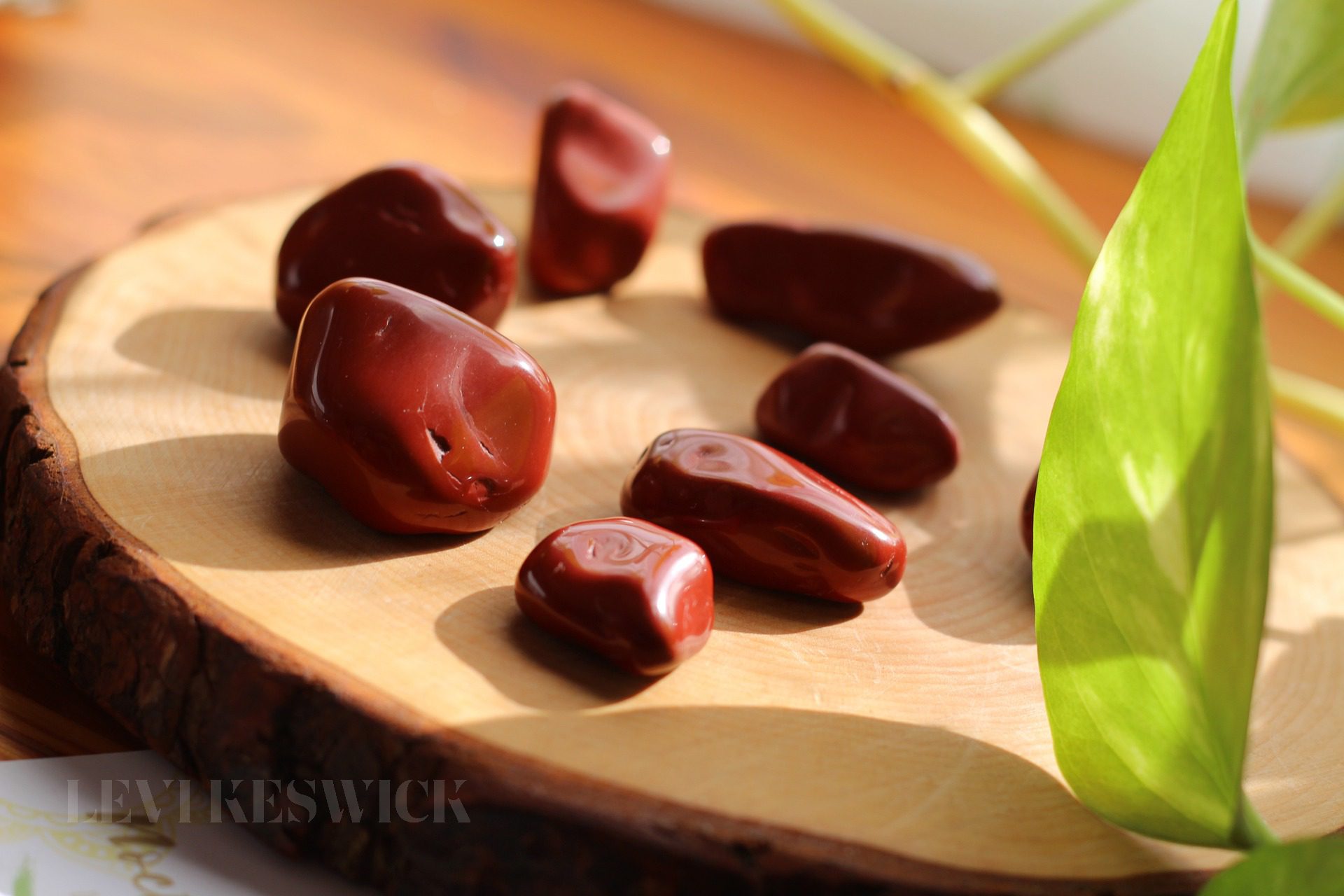Key takeaways:
- Understand the properties of red oolitic jasper
- Learn how to find and identify various types of jasper
- Discover tips for collecting and preserving your finds
Unraveling the Intricacies of Red Oolitic Jasper
Jasper is a form of cryptocrystalline silicon dioxide (SiO₂ or silica) that is opaque and characterized by a wide range of bright colors, including green, red, blue, and many others. The unique and captivating patterns found in jasper make it a favorite among collectors. In this article, we will specifically focus on the fascinating world of red oolitic jasper.
What is Red Oolitic Jasper?
Red oolitic jasper is a variety of jasper that is formed by the accumulation of small, spherical particles called ooids. These ooids are cemented together by silica, resulting in the mesmerizing patterns and textures that characterize this gemstone. The red coloration of red oolitic jasper comes from iron oxide impurities in the silica.
Identifying and Collecting Different Types of Jasper
There are numerous varieties of jasper, each with its own unique patterns, colors, and properties. Some of the more well-known types include Imperial Jasper, Brecciated Jasper, Landscape Jasper, Poppy Jasper, and Ocean Jasper. While red oolitic jasper is the focus of this article, it’s essential to familiarize yourself with other types to expand your collection and knowledge.
Imperial Jasper
Imperial Jasper is a rare, green form of jasper. Be cautious when purchasing this variety, as there are many composites on the market that may not be genuine.
Brecciated Jasper
Brecciated Jasper consists of broken pieces of jasper cemented together with chalcedony. This variety displays a multitude of colors and patterns.
Landscape Jasper
Landscape Jasper, known for its earth-toned colors, often displays patterns resembling idyllic landscapes such as rolling hills and mountains.
Poppy Jasper
Poppy Jasper is distinguished by small “blooms” across the surface, which are different from the solid orbs of color found in Orbicular Jasper.
Ocean Jasper
Ocean Jasper, found in Madagascar, is an orbicular jasper that varies in color from blue to green to red. The name comes from its deposits often being found in marine environments and accessible only at low tide.
Finding and Identifying Jasper in the Field
Jasper can be found in areas with a history of volcanic activity. In the United States, states like Oregon, Idaho, Washington, California, Arizona, and Utah are known for their abundant jasper deposits. However, you can still find jasper in other regions by researching local geology and consulting online resources or club field guides.
Walking along dry riverbeds or running streams is an effective way to find jasper, as these locations accumulate stones over time. When searching for jasper, look for stones with a waxy exterior and bright colors. To determine if a stone is indeed jasper, you can remove a conchoidal flake from the stone using a rock hammer or a hard cobblestone.
For hardness testing, a pocket knife can be used to scratch the surface of the stone. Most jasper look-alikes will be softer and easily scratched by the knife.
Tools and Tips for Collecting Jasper
When prospecting for jasper, it’s important to have the right tools and equipment with you. Here are some essential items to bring along on your collecting trips:
- Water: For drinking and for washing dusty stones to reveal their true colors
- Rock Pick: Useful for breaking rocks and prying specimens out of the ground (always wear safety glasses when using a rock pick)
- Pocket Knife: For hardness testing and other tasks
- Eye Protection: ANSI-rated glasses are recommended, but at least wear a sturdy pair of sunglasses
- Sturdy Bag: A durable bag is necessary to carry your collected specimens, as jasper is dense and can easily rip weak stitching
Preserving and Displaying Your Jasper Collection
Once you’ve collected a variety of jasper specimens, you’ll want to properly preserve and display them. There are several ways to showcase your collection, depending on your preferences and the characteristics of the stones.
- Cutting and Polishing: Large jasper chunks can be cut and polished to reveal their striking patterns and colors. This method is ideal for stones with interesting patterns hidden beneath their exterior.
- Tumbling: Smaller jasper pieces can be tumbled to create a smooth, polished surface. This method is suitable for stones with vibrant exterior coloration.
- Natural Display: Some collectors prefer to display their jasper specimens in their natural, unaltered state. This approach allows the raw beauty and unique characteristics of each stone to shine.
Final Thoughts
Red oolitic jasper is just one captivating variety of jasper that collectors can explore and appreciate. With its unique patterns and vibrant colors, it’s no wonder that jasper is a favorite among gemstone enthusiasts. By understanding the properties of red oolitic jasper, learning how to find and identify different types of jasper, and discovering tips for collecting and preserving your finds, you’ll be well on your way to building a diverse and fascinating jasper collection. Happy hunting!







